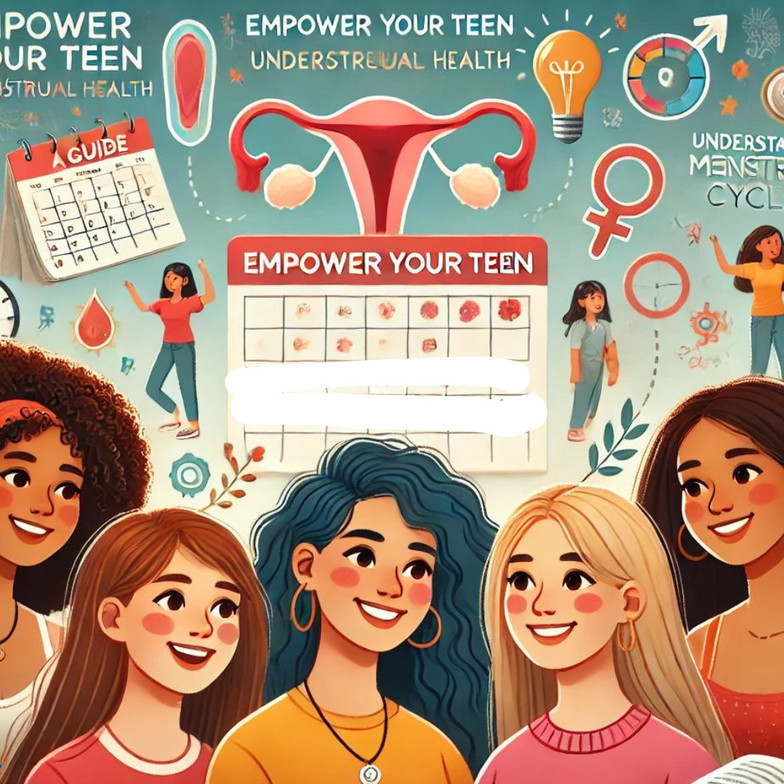
Understanding Your Menstrual Cycle: A Teen’s Guide to What’s Happening Inside
Introduction
Hey! So, you're curious about your menstrual cycle, and that's awesome! Your menstrual cycle is more than just the days you have your period – it’s a whole month-long journey that tells you a lot about your health. Let’s dive in and break it down in a fun and easy way.
What is the Menstrual Cycle?
Think of your menstrual cycle like a monthly rhythm or dance that your body goes through. It’s divided into four cool phases, each doing something different. Knowing what’s happening can help you understand your body better and spot any signs that something might be off.
The Four Phases of the Menstrual Cycle
Menstrual Phase (Days 1-5):
What’s Happening: This is when you have your period. Your body is getting rid of the old uterine lining, which comes out as blood.
How You Might Feel: You might have cramps, feel tired, or be a little moodier. If it’s super painful or heavy, it’s good to chat with someone about it.
Follicular Phase (Days 1-13):
What’s Happening: Your brain sends signals to your ovaries to get an egg ready (like a little prep party!). Your estrogen levels start to rise, helping your uterus get ready.
How You Might Feel: You might feel more energetic and happy. This can be a great time to start new projects or hang out with friends.
Ovulation (Around Day 14):
What’s Happening: Your ovary releases an egg. This is like the main event of the cycle.
How You Might Feel: Some people feel a tiny twinge or cramp on one side of their lower abdomen. You might also notice your cervical mucus (that clear stuff) getting thicker and stretchy.
Luteal Phase (Days 15-28):
What’s Happening: The empty follicle now releases hormones to keep everything balanced. If nothing special happens, your body gets ready to start the cycle over again.
How You Might Feel: You might get PMS (premenstrual syndrome) symptoms like bloating, breast tenderness, mood swings, and cravings.
What Your Symptoms Mean
Beyond Your Period:
Cramps: Not just during your period. If you get cramps at other times, it might mean something’s off balance.
Mood Swings: Feeling up and down can be due to hormonal changes. Totally normal but if you find they are extreme than that could mean and imbalance and there are things that you can do to help manage them.
Skin Changes: Breakouts or changes in your skin can be linked to different phases of your cycle.
Fatigue: Feeling super tired at times? Your body is working hard to keep things balanced.
How Traditional Chinese Medicine (TCM) Can Help
What is TCM?
Holistic Approach: TCM looks at your whole body, not just symptoms. It uses cool methods like acupuncture, herbal medicine, and lifestyle tweaks to keep you balanced.
Understanding the Cycle: Every part of your cycle gives clues about your health. TCM helps figure out these clues and treats the root causes of any issues.
Common Treatments:
Acupuncture: Tiny needles (don’t worry, they don’t hurt!) are used to stimulate points on your body, helping to balance hormones and reduce pain.
Herbal Medicine: Specific herbs are used to fix imbalances and support your menstrual health.
Lifestyle Changes: Diet, exercise, and stress management tailored to support a healthy cycle.
Why This Matters
Empower Yourself:
Knowledge is Power: Understanding your cycle helps you know what’s normal for you and when to seek help.
Beyond the Pill: Many teens get put on birth control for symptoms without understanding their cycle. Knowing more gives you options.
Speak Up: If something feels off, talk to a healthcare provider. Your symptoms matter and deserve attention.
Conclusion: Your menstrual cycle is like a monthly health check-up. By learning about the different phases and what they mean, you can take charge of your well-being. If you have questions or want to explore treatments like acupuncture and herbal medicine, feel free to reach out. I’m here to help you navigate your health journey with confidence.

Tanya Kelloway
Contact Me



